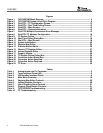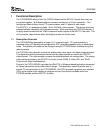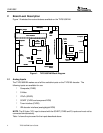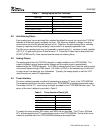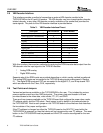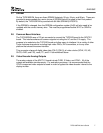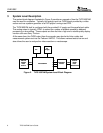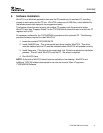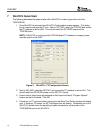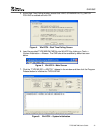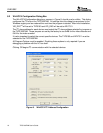
SLEU063
TVP5160EVM User’s Guide 3
1 Functional Description
The TVP5160EVM refers to both the TVP5160 board and the ADV7311 board when they are
connected together. Both boards share a common interface via a 120-pin connector. This
interface provides all data, clocks, I
2
C communication, and 5-V power to each board.
The ADV7311 is a professional grade, 12-bit, 216-MHz, video encoder. This device minimizes
potential artifacts caused by the re-encode process. When evaluating the TVP5160 decoder, it
is highly recommended that the YPbPr component video outputs of the ADV7311 be used. This
will ensure the video decoder within the display monitor will not be used.
1.1 Description Overview
The TVP5160EVM is powered by a single, 5-V, universal supply. I
2
C communication is
emulated using a PC parallel port configured for ECP (extended capability port) or bidirectional
mode. The parallel port mode can be changed using the PC BIOS setup, available during the
reboot process.
The TVP5160 video decoder converts the analog video input signal into digital component data.
This digital data and the associated clocks from the video decoder are sent to the ADV7311
video encoder. The video encoder converts the digital data back into analog video. The analog
video outputs provided by the ADV7311 encoder include CVBS, S-Video (SV), and YPbPr.
These are all output simultaneously.
Control of the TVP5160EVM is provided by WinVCC4, a Windows-based application developed
by Texas Instruments and provided free of charge. This application uses the parallel port to
provide I
2
C communication to the TVP5160EVM. WinVCC4 provides a graphics user interface
(GUI) and a register level interface to program and vary the controls available within the
TVP5160 decoder and the ADV7311 encoder.




